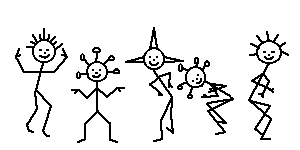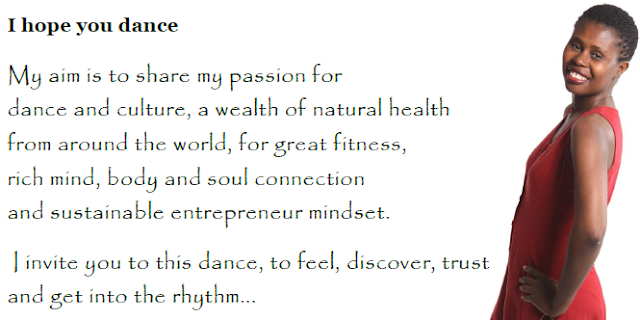African Dances: An Introduction
 African dances have both historic and social traditions that reflect more significance than those of many other cultures.
African dances have both historic and social traditions that reflect more significance than those of many other cultures. The dances help celebrate not only special events and festivals, similar to other cultures, but regularly tell the stories of the state's history.
Unwritten oral history, passed through generation before writing became part of the culture, frequently included African dance as a part of the process.
Lots of the dances taught the young about social morays and values, others were simply for the excitement of celebration. Some of the dances were tributes of thanks to the gods for helping the clan achieve success on a hunt or crop.
Many clans trained singers to provide the music for the African dance. They produced intricate harmonies and set the rhythmic pace for the dance. While most of the music came from vocals, frequently drums went with the singers to provide heavy rhythms for the dancers. The bougaragou, on of the drums used, is obviously the hottest, although there are lots of others.
The dance of Africans is one technique the cultures had of passing on their histories and beliefs. African dancing holds more importance than the dance steps of other cultures, since it part of their oral history practice rather than solely for social entertainment. The dance passed down each clan's beliefs and history long before they'd written records. It is an element of the oral history of each tribal country.
"It is music and dancing that makes me at peace with the world... And at peace with myself..."
Nelson Mandela
The African dances not only told of historical achievements and actions ; they were a technique to pass on the societies social values to the clan's young folks. Some of the dances, however, were actually praises to the gods for help with the crops or a victory in war or on the hunt.
Singers for the dance provided the background music. The trained voices produced complex harmonies and tunes and regularly provided the regular pace for the dance. Some clans used more than only the vocals for the rhythm ; they used drums also. Of all the many various drums the tribes used in their dance rites, the bougaragou was the most popular and frequently used.
The heartbeat of the dance came from the drums and it showed the essence of the tribe. The quick powerful rhythm indicated the clan's vitality and strength. Just as chapel bells call folk to worship, the drum called the town together for conferences and ceremonies. It also provided a symbol for the joining of all African countries, just as the African dance does.
While each culture has national dances, frequently opposite sexed partners perform those of Europe and Latin America. These dances may display the culture but they also show off both the relationships between the dancers and the abilities of the dancers themselves. The African dancers often were uni-sexed and of one age group. The African dance is all about the story, not the dancers.
Western European dancers, displayed affection with a touch and an embrace. This is not characteristic of African dancers where social morays condemned the show of public touch. The culture maintains that moral worth in their dance. This explains why most dances are sex specific, don't have the dancers touching and are commonly banished to specific age groups.
Some examples of the African dance help to show the information on its history and tend to be characteristic of the types of dance utilized by the various clans.
Winning wars was critical to the various African states and to help them build courage and become dominant on the battleground, they took part in warrior dance before the battle ensued. The dance started slowly but as it progressed, it became wild and violent. It displayed the hideous actions on the battlefield.
Weddings and anniversaries are vital to each nation and African countries were no different. The dance performed for these occasions, the wedding dance, was consisting of women to rejoice in the couples love and affection. It was one way the tribe acknowledged the couple's marital bliss.
Like many cultures, the transition of a kid to adulthood was an important occasion. African dances to celebrate this moment, the approaching of age dances, were part of the traditional celebration.
While there are other critical dances in the African culture, these few mentioned are frequently included in many tribal parties. The steps of the individual African dances might be different but the meaning it held stayed the same and showed solidarity of the people of Africa.
Please take a moment to tell me about your observations or any particular comment on African Dances: An Introduction.
Share freely...
I'm Turenne / Tilarenn. I welcome you warmly in this journey through dance, path of the universal wellness that is movement, with inspirations to fully stir our vital energy and dance our soul.
 |
| Dance, stir your vital energy and Be in every moment! |
About the author: Phillip Lunapa
About me: Turenne / Tilarenn
VIEW: In each text, capture the vital and creative energy that best convey soul dance for your delight.
Let us Hear you in a comment below...
Let us Hear you in a comment below...


No comments:
Post a Comment